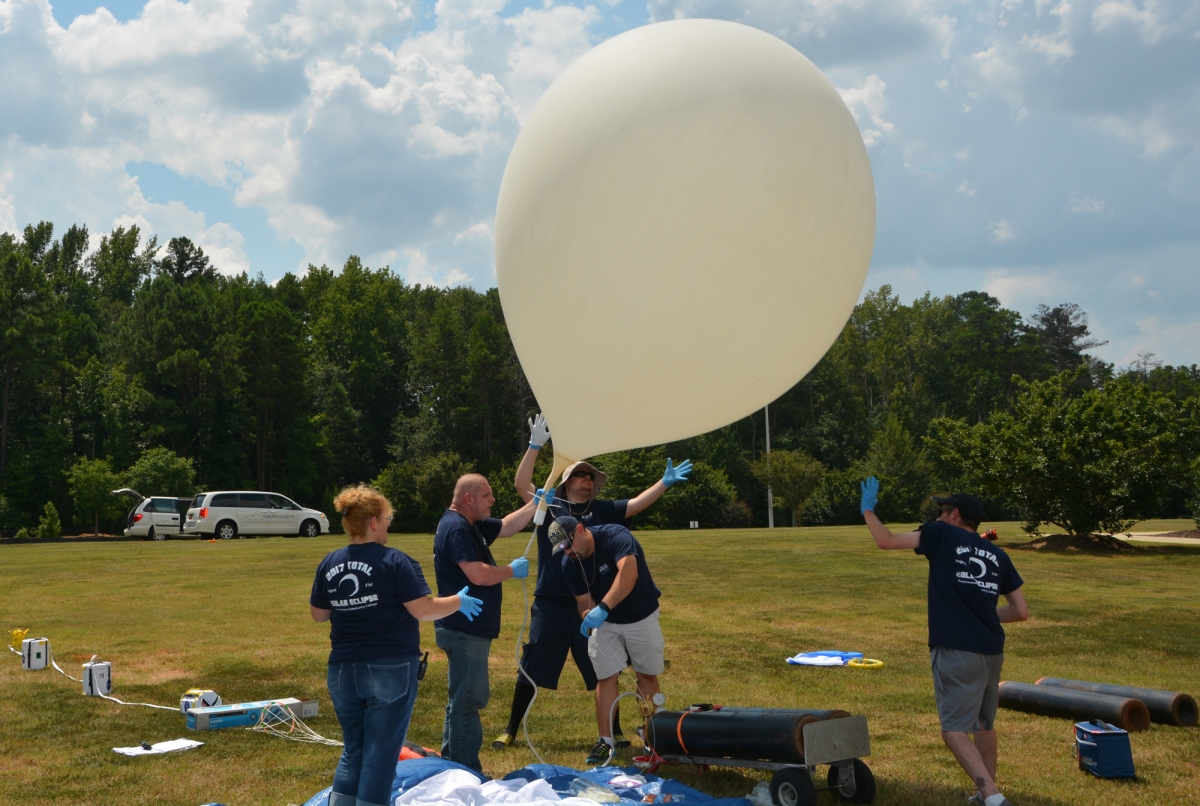 |
| SCC’s eclipse balloon team prepares to launch on Aug. 21 in Anderson, S.C. Pictured are, left to right: Carol Hadden of Otto, Billy Newton of Franklin, James Howe (reaching for balloon) of Cullowhee, Jesse Moore of Franklin and SCC electronics engineering technology instructor Justin Hess. (photo by Julia Hartbarger, SCC Public Relations) |
 |
| This image of the Aug. 21 total solar eclipse was taken by SCC’s high altitude balloon, which reached an altitude of approximately 80,000 feet. |
 |
| SCC public relations assistant Julia Hartbarger traveled with the eclipse team to take pictures of launch and gives us a behind the scenes look at the events of that day. |
A little time has passed since the Great American Solar Eclipse on Aug. 21, but the memory will always be there for myself and millions of others who were fortunate enough to witness the celestial event of a lifetime.
While everyone was getting ready to view the eclipse in various places, I was in Anderson, S.C., with Southwestern Community College’s high-altitude weather balloon team snapping pictures as they prepared to launch about an hour before totality.
I had watched the team launch several times before, but this day felt different; SCC was one of only 50 teams chosen by NASA to launch tens of thousands of feet in the air to capture images and video of Earth’s shadow during the eclipse.
We arrived at Tri-County Technical College shortly before 10 a.m., and I took pictures as the team laid out all of the equipment and tested the connection before they started filling the balloon with helium as the clock approached 1 p.m.
Only a few seconds after launch, the payloads broke off from the balloon and fell to the ground. The balloon kept going up into the atmosphere, and my heart broke. The team had worked so hard and prepared for so long for this moment, and I thought it was ruined.
That’s when I looked over at the team, and they were already pulling a spare balloon out of their equipment box and filling it with helium. I was so impressed with how calm the team remained throughout the failed first launch and the impending second launch.
The second balloon took off without a hitch, and it was so rewarding to watch the balloon as it got higher and higher into the sky before it finally was out of view.
After we watched the eclipse, I left with the “chase team” to go retrieve the balloon. This is when things got interesting. We were tracking the balloon’s GPS to see where it would land, and - from all accounts - it looked like the balloon had landed in the Lake Hartwell.
That meant the team would have an extremely difficult time trying to retrieve it.
After driving around for about 15 minutes, we got a phone call saying that the payloads had been recovered and the people that found it would meet us at the dock.
We got to the dock and lo and behold retired NASA scientists who saw the payloads fall out of the sky and land in the water were the ones that retrieved the equipment. They drove the boat over to the spot where the payloads landed (intact) and picked everything up out of the water and saw SCC’s contact information.
You just can’t make this stuff up.
We talked to the scientists and their families, and the team explained how the launch was a NASA funded project as I snapped a few pictures of the group with the payloads and the remnants of the balloon.
Eclipse day was one of lots of ups and downs for the team, but it ended well and they learned a lot about the launch and made some new NASA friends in the process.
I am so fortunate to have been a part of not one but two amazing events, and I look forward to what the balloon team has in-store for the future.

